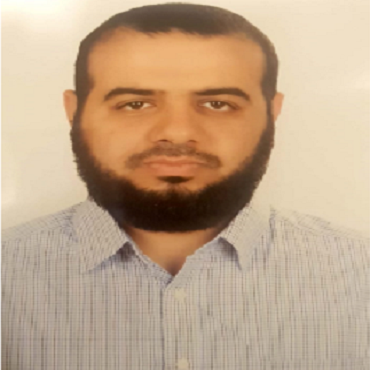Scientific Program

Abdullah Al Ruqaib
Imam Abdurrahman bin Faisal University, Saudi Arabia
Title: Burnout syndrome among physicans working in King Fahad Hospital of the Unversity, al-Khobar
Biography:
Abdullah Al Ruqaib serves as senior registrar of family medicine at family and community medicine center in al imam abdurrahman bin Faisal University, Dammam, Saudi Arabia. He held various leadership roles at family and community medicine center. He is trainer of Saudi board program and member of exam committee for Saudi board at family and community medicine center. His interests focuses on safety in health serves centers. He serve as chairman of safety committee, member of strategy planning committee and performance improvement committee at family and community medicine center in al Imam abdurrahman bin Faisal university.
Abstract
Background: Burnout syndrome is an occupational mental health problem that affects human service professionals, including physicians, due to chronic job stress. It is a syndrome of three dimensions: Emotional Exhaustion (EE), Depersonalization (DP), and reduced Personal Accomplishment (PA), that can occur among individuals who work with people. Physicians are placed under stresses as they are required to provide quality services despite the weakness of infrastructure, shortage of staff, and increased number of patients. In addition, physicians are required to continuously update their knowledge, improve their skills and at the same time take care of themselves and their families. All these stresses may eventually lead physicians to “burnout”. Despite the importance of this occupational mental health problem, there is a dearth of literature about job burnout among physicians in Saudi Arabia.
Objectives: This study was conducted to estimate the prevalence of burnout among physicians working in KFHU and to determine the factors associated with burnout among physicians working in KFHU at eastern province of Saudi Arabia.
Methodology: This was a cross-sectional survey targeting all eligible physicians working in KFHU. A total of 390 physicians were targeted and contacted. A self-administered questionnaire consisting of two sections was used. The first section was constructed by the researcher to include background information on determinant of burnout. The second section was the Maslach Burnout Inventory-Human Services Survey. The prevalence of burnout levels and each dimension were calculated. The SPSS program was used for data entry and analysis.
Results: A total of 265 instruments were analyzed .The response rate for this survey was 67.9%. The prevalence of the different dimensions of burnout are the following: 111 (41.9%) experienced average to high emotional exhaustion, 72 (27.2%) experienced high depersonalization and 102 (38.5%) experienced low personal accomplishment. Of all respondents, 28 (10.6%) had burnout as identified by the combination of high EE, high DP and low PA.
- Hospital Management and Epidemiology
- Healthcare Administration and Telemedicine
- Hospital Emergency Management.
- Hospital Management and Clinical Department Management
- Hospital Management and Health Insurance
- Healthcare Quality and Operations Management
- Healthcare Statistics and Research
- Healthcare and Innovations
- Hospital Management Affects Patient Care
- Patient Safety
- Nursing Care
- Entrepreneur Investment Meets

